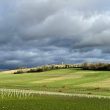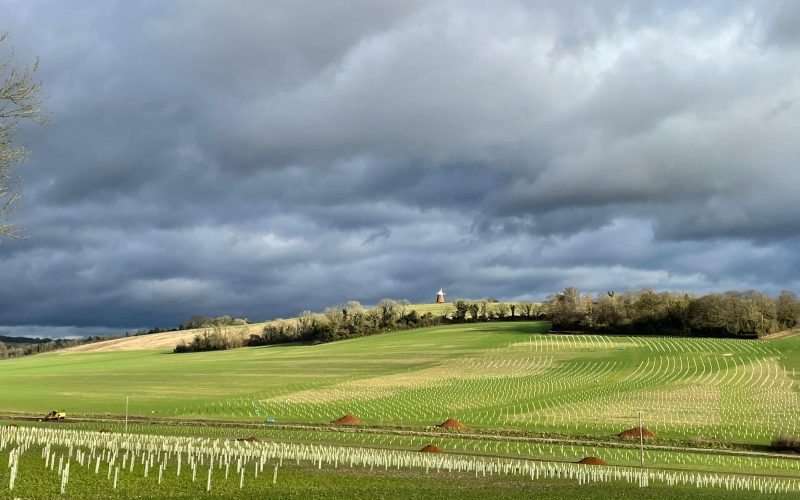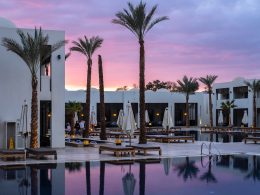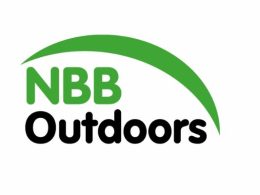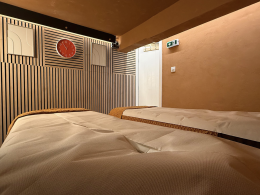Historic farmland in the South Downs National Park is set to be transformed in one of the UK’s largest ever Biodiversity Net Gain (BNG) schemes, as Halnaker Hill Farm in West Sussex embarks on an ambitious restoration project.
- 330 acres within the South Downs National Park to be restored, inspired by original 18th-century maps
- Landmark initiative delivering 856 BNG units for developers, corporates, and individuals
- Regenerative farming to include planting 20,000 trees, creating 7km of hedgerows, establishing wildflower meadows, and reintroducing Sussex cattle
Spanning more than 300 acres, the scheme will return Halnaker Hill Farm, near Chichester, to its natural state, restoring a rich mix of habitats including hedgerows, grasslands, ponds, woodlands, and wildflower meadows.
The project has been officially registered with the South Downs National Park Authority and Natural England, positioning it as one of the largest single BNG land banks in the UK in terms of available biodiversity units. A total of 856 BNG units will be released to support both the mandatory and voluntary markets across the country, contributing to nationwide efforts to combat biodiversity loss and climate change.
The units are available to residential, commercial and infrastructure developers, who by law must meet the Government’s Environment Act 2021 biodiversityrequirements for a minimum of 10% BNG at the site of their developments, and must purchase off-site BNG Units to make up any shortfall.
Voluntary units are also available for corporates, to help them meet their ESG targets by supporting nature recovery, and to individuals looking to personally invest in enhancing the natural environment.
Halnaker Hill Farm is owned by Halnaker Hill Natural Capital (HHNC), with commercial aspects managed by Kingsbridge, a leading developer of commercial projects across the south. Before it was acquired by HHNC in 2024, the land had been farmed for wheat since the 1970s, with the use of chemical fertilisers and pesticides leaving poor quality soil and low levels of biodiversity.
Greg Lukasiewicz, Sales & Marketing Director at Halnaker Hill Natural Capital, said: “Halnaker Hill Farm is one of the largest BNG Nature banks in the UK, generating over 850 available BNG units, providing us with an outstanding opportunity to restore hundreds of acres of farmland through regenerative farming methods.
“Since HHNC acquired the site in 2024 we have been at work, and have already seen the landscape transform from intensively farmed land to a green haven for wildlife, as the grassland, new trees and hedgerows that we have already planted are given the space to thrive.
“We are excited to launch Halnaker Hill Farm to the market, setting a new benchmark for sustainable, regenerative farming while helping to meet the BNG needs of developers, and providing organisations and individuals with a responsible way to invest in biodiversity and the fight against climate change.”
Chris Fry, CEO of Kingsbridge, said: “We are immensely proud to play our part in the success of Halnaker Hill Farm, a project which aligns with our values as a commercial developer that puts sustainability at the heart of its business.
“Together, our shared passion for environmental responsibility and for the restoration of this beautiful, historic landscape will create a unique, sustainable legacy that will have a positive effect on the environment for generations to come.”
Halnaker Hill Farm, overlooked by the historic 18th-century Halnaker Windmill, has been farmed for centuries and there is even evidence of a Neolithic encampment having once been at the site.
The restoration plan is based on an 18th-century map, drawn up by the topographers Yeakell & Gardener for the “Great Survey of Sussex”, which shows how farmers worked alongside nature before the advent of intensive farming methods.
The project will recreate many of these historic elements, such as the positioning of hedgerows, and involves regenerative agriculture and carefully designed conservation practices including the hand planting of over 20,000 trees, restoration of wildlife corridors, creation of ponds and wildflower meadows, and the reintroduction of sheep and Sussex cattle to the land.
The project spans across two Natural Character Areas (NCAs) including South Coast Plain and South Downs National Park Authority, delivering habitats of medium and high distinctiveness. These include hedgerows; lowland calcareous (chalky) grassland; other neutral grassland; mixed scrub; ponds; individual trees and woodland.

